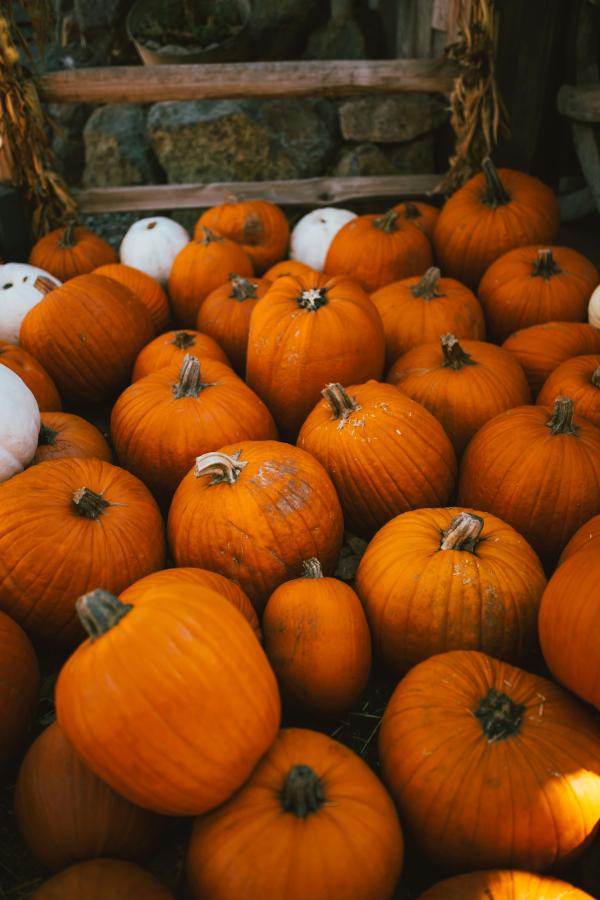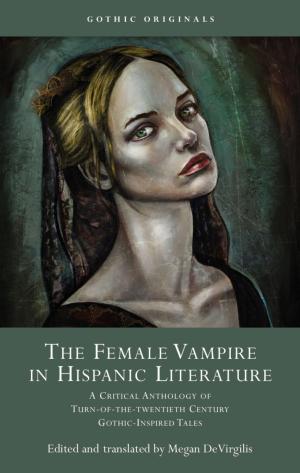Folktales, Fall Traditions, and the Supernatural

Unsplash

Unsplash
With Halloween, Día de los Muertos, and darker evenings on the horizon, October is the perfect month to learn something new about cultural traditions, history, and literature around the mystical, magical, mysterious, and macabre. This bookshelf compiles NEH-funded work that celebrates the supernatural, explores literary monsters, and engages with other eerie or uncanny artifacts.
The Salem Witch Trials: Their World and Legacy
Since 1692, the Salem witch trials have been dramatized, mythologized, and re-imagined in popular memory. Moreover, the specter of Salem has been invoked in times of national anxiety, making it a synonym for unfounded mass hysteria. Middle and high school teachers in this NEH-funded three-week hybrid summer institute engaged in an in-depth study of the origin, development, and legacy of the Salem witch trials. In addition to guided discussions of key texts and hearing from leading scholars in the field, participants visited historic sites and memorials related to the trials. Participants also have the rare opportunity to work with original trial transcripts and other primary sources.
A Cultural History of Day of the Dead
NEH Public Scholar Mathew Sandoval received funding for a monograph examining the invention of Día de los Muertos (the Day of the Dead) as a form of Mexican national culture in the early and mid twentieth century. In A Cultural History of the Day of the Dead: How Día de los Muertos Became Mexican, Sandoval argues that Day of the Dead’s identity as a national symbol reflects the cultural work of prominent transnational artists, intellectuals, and government officials. The monograph focuses on the visual and narrative representations of Día de los Muertos in mass media, art exhibitions, tourism, and film, and how these depictions paved the way for the holiday’s global popularity.
Supernatural America: The Paranormal in American Art
This traveling exhibition explores the numerous ways in which artists in the United States have made sense of their own experiences of the paranormal and the supernatural, developing a rich visual culture of the intangible. The artwork displayed in Supernatural America: The Paranormal in American Art explores how ghosts and paranormal beings are an inescapable part of the history of America and our daily life. Supernatural beings permeate our national identity through our literature, entertainment, and art, and artists have been integral to visualizing ghosts and embracing the mysterious.
The NEH-supported exhibition Supernatural America traveled to the Toledo Museum of Art, the Speed Museum of Art, and the Minneapolis Institute of Art. Read reviews in the St. Paul Pioneer Press, and the Louisville Courier-Journal.
Haunted Houses of the Black Atlantic
Denison University English Professor, Diana Adesola Mafe, received an NEH summer stipend to write Haunted Houses of the Black Atlantic. Mafe’s project is the first book-length study of the relationship between Black people and haunted houses and considers how Black writers and artists have engaged with haunted houses as a means of subverting expectations of what constitutes a terrifying place. The eerie, the uncanny, and the macabre have long been used by writers of the Black diaspora to critique histories of white supremacy, and Mafe explores this trope in herforthcoming publication.
Frankenstein’s Bride in Contemporary Fiction and Poetry
University of Arkansas English Professor Lissette Lopez Szwydky received an NEH Summer Stipend for work on her second book, titled Frankenstein’s Bride: A Transmedia Cultural History of Her Own. The forthcoming publication will survey and analyze 16novels and six poems to illustrate how writers have adapted Whale’s 1935 visualization of Frankenstein's Bride to consider terror, desire, history, and feminism.
The Female Vampire in Hispanic Short Fiction at the Turn of the 20th Century: A Critical Anthology
Megan DeVirgilis received an NEH Award for Faculty to produce The Female Vampire in Hispanic Short Fiction at the Turn of the 20th Century: A Critical Anthology. The collection contextualizes and synthesizes Latin American and Spanish Gothic-inspired female vampire stories in relation to the greater European Gothic tradition. The anthology specifically focuses on lesser or unknown works by established scholars and includes translations of many of these texts into English.
Sorcery or Science?: Contesting Knowledge and Practice in West African Sufi Texts
An NEH Fellowship to religion scholar Ariela Marcus-Sells supported research and writing of a book on two eighteenth-century Sufi Muslim theologians –– Sīdi al-Mukhtār al-Kuntī and his son and successor, Sīdi Muḥammad al-Kuntī––who influenced the development of Sufi Muslim thought in West Africa. Known as the Kunta scholars, Mukhtār al-Kuntī and Muḥammad al-Kuntī practiced and taught networks of students what they described as the “sciences of the unseen.” Marcus-Sells’s research examines how these Sufi scholars argued against classification of their practices as acts of sorcery and interrogates the nature and role of what scholars have called “magic.” A subsequent NEH Open Book grant provided support to Penn State University to produce an open access digital edition of the NEH-supported book.
One State/One Story: Frankenstein
Indiana Humanities hosted a statewide celebration of the 200th anniversary of Mary Shelley’s classic work of science fiction, Frankenstein. This NEH-funded humanities council program included discussions, speaker programs, STEM activities, and more reflecting on the novel’s enduring relevance and how Shelley’s tale helps us consider what it means to be human, navigate difference, and examine the role of science and technology in society.
Unseen: The Religious Supernatural in the Earliest Middle Ages
Lisa Marie Bitel received an NEH Fellowship for her book project “Unseen: The Religious Supernatural in the Earliest Middle Ages,” on religious conversion to Christianity in early medieval Britain and Ireland between 400 and 800 C.E. The evidence included in the project will demonstrate how people in the region gradually shifted their interactions with the supernatural.
Honoring Traditions: Día de los Muertos Community Celebration
The Sun Valley Museum of Art received an NEH grant for a series of programs, lectures, and a special event exploring Día de los Muertos. These events engaged members of Spanish- and English-speaking communities in making, learning, and celebrating Día de los Muertos. The celebration displayed altars and ofrendas created by community members and offered traditional food and music of Mexican Día de los Muertos celebrations.
Sorcery Narratives in the History of Haiti and the Dominican Republic
This NEH-funded book-length study of Hispaniola focuses on shared folklore, historical memory, and the environment of the borderlands between Haiti and the Dominican Republic. In this project, UCLA professor Laura (Robin) Derby focuses on sorcery narratives as a form of historical memory in Haiti and the Dominican Republic. The project brings forth the cultural meanings of animals into the social and environmental history of Latin America and the Caribbean.
Remaking Monsters and Heroines: Adapting Classic Literature for Contemporary Audiences
Remaking Monsters and Heroines: Adapting Classic Literature for Contemporary Audiences was a two-week virtual NEH-supported Summer Institute for K–12 teachers hosted by the University of Arkansas in 2021. The institute invited educators to learn about literary adaptation and its role in recirculating the literary canon. Discussions of adaptations of Frankenstein and Cinderella in film, drama, young adult fiction, children’s picture books, and graphic novels were central to the Summer Institute and offered opportunities for educators to converse and design materials to engage diverse learners.
Frankenreads
The Keats-Shelley Association of America hosted an international celebration of the 200th anniversary of Mary Shelley’s Frankenstein with the support from NEH. This project, titled Frankenreads, included public programs, educational curricula, and live-streamed public reading of Frankenstein on October 31, 2018.



